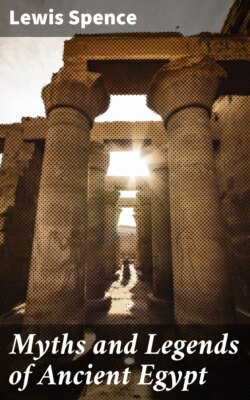Читать книгу Myths and Legends of Ancient Egypt - Lewis Spence - Страница 35
На сайте Литреса книга снята с продажи.
Costume
ОглавлениеThe fashion of apparel differed considerably with the dynasties. As we have already noted, the Pharaoh possessed a peculiar attire of his own, upon which that of the upper ranks of society was to some extent modelled. The climate did not permit or encourage the wearing of heavy material, so that fine linen was greatly in use. The upper portions of the body were only partially covered, and amongst the nobility in ancient times a species of linen skirt was worn. The women's dress from the earliest times was a dress reaching from the armpits to the ankles, with straps over the shoulders. The men's dress was usually a form of loin-cloth. The wearing of wigs was practically universal, and originated in prehistoric times. At some early period native ritual had prescribed that the head must be shaved, so that the fashion of the long peruke, or the close-fitting cloth cap with ear-lappets, became practically a necessity. We find, however, that some ladies refused to sacrifice their hair, and in the well-known statue of Nefert we notice the bands of natural hair, neatly smoothed down over the brow, peeping out beneath the heavy wig she is wearing. Practically all classes wore sandals of leather or plaited papyrus.
In general appearance the Egyptian was tall, being considerably above the European average in height. The race were for the most part dolichocephalic, or long-skulled, narrow-waisted and angular. In later life they frequently became corpulent, but during youth and early manhood presented rather a 'wiry' appearance. They had, however, broad shoulders and a well-developed chest-cavity. The examination of thousands of mummies by Dr. Elliot Smith has proved that in later times the Egyptian race greatly improved in physique and muscular qualities. In character the Egyptian was grave, and perhaps a little taciturn, being in this respect not unlike the Scot and the Spaniard; but, like these peoples, he had also a strain of gaiety in his composition, and his popular literature is in places eloquent of the philosophy of laissez-faire. It is probable that the stern religious code under which he lived drove him at times to deep disgust of his surroundings. The Egyptian peasant's amusement at times took the form of intoxication, and pictures are extant which show the labourer being borne home on the shoulders of his fellows. Among the upper classes, too, it cannot be denied that a philosophy of pleasure had gained a very strong hold, especially in later times. They probably thought that if they committed the Book of the Dead to heart they were sure of a blissful future, and that in this lay their whole moral duty. As regards their ethical standpoint, it may be said that they were rather unmoral than immoral, and that good and evil, as we understand it, were almost unknown to them. The Egyptians as a race possessed, however, an innate love of justice and right thinking, and they will always take their place in the roll of nations as a people who have done more than perhaps any other to upbuild the fabric of order, decency, and propriety.
